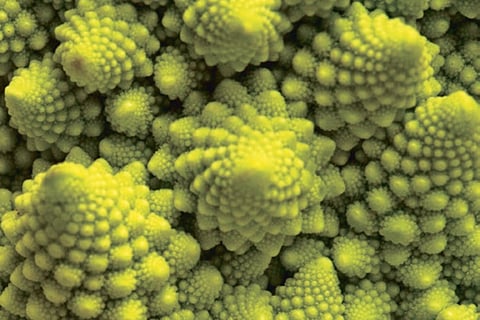

Chennai
This is the true alchemy, says Christophe Godin, a senior researcher at the National Institute for Research in Digital Science and Technology in Lyon, France.
Dr. Godin studies plant architecture by virtually modelling the development of the forms of different species in three dimensions. He wondered what genetic modification lurked behind cauliflower’s nested spirals and the logarithmic chartreuse fractals of Romanesco, a cauliflower cultivar that could almost be mistaken for a crystal. “How is nature able to build such unexpected objects?” he asked. “What can be the rules behind this?” Fifteen years ago, Dr. Godin met François Parcy, a plant biologist with the National Center for Scientific Research in Grenoble, France. In Dr. Parcy, Dr. Godin recognized a fellow fiend for fractal florets. “There is no way you cannot notice it is such a gorgeous vegetable,” Dr. Parcy said, in reference to Romanesco. Buoyed by a passion for Brassica, Dr. Godin and Dr. Parcy investigated the genetic mystery of the fractal geometry in both Romanesco and standard cauliflower, conjuring the plants in mathematical models and also growing them in real life. Their results, which suggest the fractals form in response to shifts in the networks of genes that govern floral development, are published Thursday in Science.
“It’s such a nice integration of genetics on one hand and rigorous modelling on the other,” said Michael Purugganan, a biologist at New York University who was not involved with the research. “They’re trying to show that by tweaking the rules of how genes interact you can get dramatic changes of a plant.”
In the early 2000s, Dr. Parcy believed he understood the cauliflower. He even taught classes on its flower development. “What is a cauliflower? How can it grow? Why does it look like this?” he said. Cauliflowers, like brussels sprouts, stem from centuries of selective breeding of Brassica oleracea. Humans bred brussels sprouts for lateral buds and cauliflower for flower clusters. Cauliflowers, however, do not produce flower buds; their inflorescences, or flower-bearing shoots, never mature to produce flowers. Instead, cauliflower inflorescences generate replicas of themselves in a spiral, creating clusters of curds like plant-based cottage cheese. Their muse was Arabidopsis thaliana, a well-studied weed in the same family as cauliflower and its many cousins. If a cauliflower has a single cauliflower at the base of the plant, Arabidopsis has many cauliflower-like structures along its elongated stem. But what genes could refine these lesser cauliflowers into one grand, compact cauliflower? And if they identified those genes, could they warp these cauliflowers into the peaks that Romanescos form? To answer these questions, the researchers would tweak the gene network and run it through mathematical models, generate it in 3-D and mutate it in real life. “You imagine something, but until you program it you don’t know what it’s going to look like,” Dr. Parcy said. “The story is not yet finished,” Dr. Godin said, adding that he and Dr. Parcy will continue refining their cauliflower models. “But we know we are on the right track.” But they are open, they say, to studying anything that flowers.
Imbler is a journalist with NYT©2021
The New York Times
Visit news.dtnext.in to explore our interactive epaper!
Download the DT Next app for more exciting features!
Click here for iOS
Click here for Android